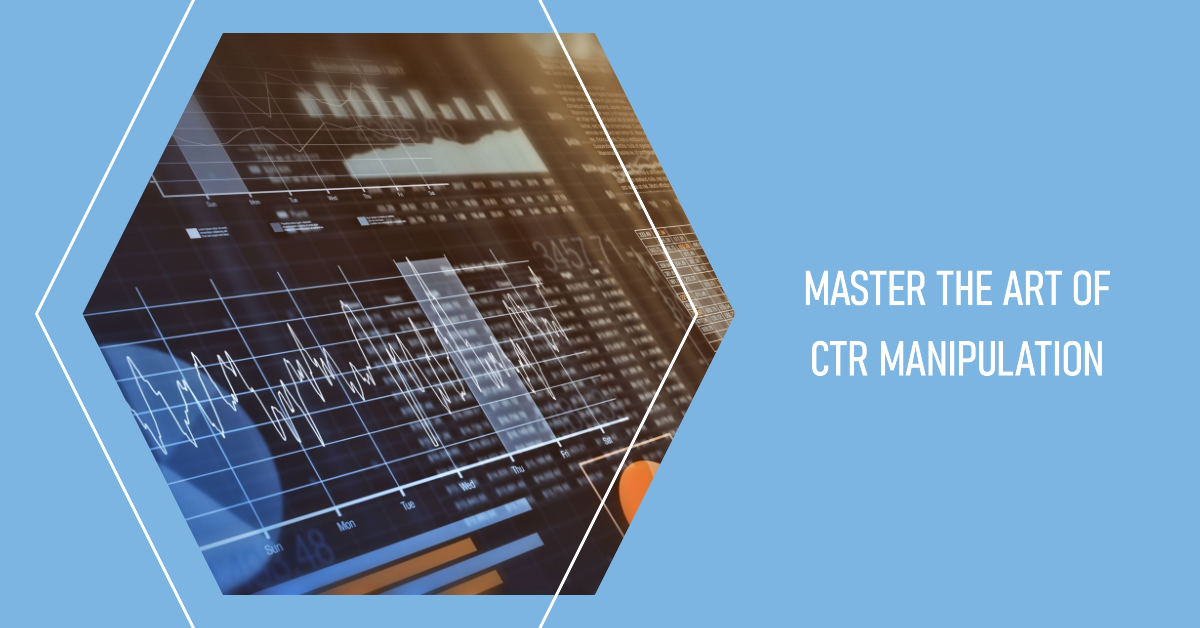CTR Manipulation Press Release-- Introducing New Techniques for CTR Optimization
CTR Manipulation: A Game Changer for Digital Projects
The rise of CTR adjustment has actually unquestionably changed digital advertising approaches, offering marketing experts with tools to enhance interaction and drive web traffic efficiently. What implications might this stabilizing act hold for the future of digital projects?
Recognizing CTR Adjustment
Although click-through rate (CTR) adjustment might look like a simple method in digital advertising and marketing, it incorporates a variety of techniques intended at unnaturally pumping up interaction metrics. This control can take different forms, consisting of the usage of click ranches, bots, or deceitful advertisement positionings that misdirect consumers into clicking. These techniques can compromise the honesty of efficiency data, making it challenging for marketers to determine the real performance of their campaigns.
Additionally, CTR control raises honest issues, as it undermines the transparency of electronic marketing. The dependence on filled with air metrics can bring about illinformed advertising choices, skewing source allowance and project methods. Consequently, businesses might spend greatly in channels and techniques that show up effective however do not produce actual interaction or conversions.

Advantages of Click-Through Rate Optimization
Maximizing click-through rate (CTR) is vital for improving the performance of digital marketing projects. A higher CTR indicates that a larger proportion of individuals are engaging with the web content, which can bring about increased website web traffic and better conversion prices. By boosting CTR, brand names can effectively designate their advertising sources to initiatives that produce the greatest returns.
One of the main advantages of CTR optimization is the capacity for boosted advertisement positioning and reduced costs - CTR Manipulation. Systems like Google Advertisements reward higher CTRs with better ad positioning and minimized cost-per-click (CPC), enabling marketing experts to extend their budgets even more. Furthermore, a well-optimized CTR can enhance brand name presence, as higher involvement rates commonly correlate with enhanced organic reach

Techniques for Reliable CTR Control
To properly manipulate click-through prices (CTR), marketers can use a variety of calculated methods that enhance customer interaction and drive website traffic. One basic strategy is enhancing ad duplicate to develop engaging and action-oriented language. CTR Manipulation. Making use of strong call-to-action (CTA) phrases motivates individuals to take instant activity, increasing the possibility of clicks
Another effective strategy is A/B testing, which enables marketing professionals to compare different advertisement variations. By systematically examining performance metrics, see here they can identify which aspects resonate best with the target market, thereby refining their strategies for optimal impact. In addition, leveraging aesthetically attractive graphics and concise messaging can catch focus swiftly, making it more possible that users will involve.

Last but not least, optimizing landing web pages to make sure a seamless customer experience can lower bounce prices and motivate additional interaction, inevitably fostering higher CTR. By incorporating these techniques, marketing experts can efficiently manipulate CTR to attain their project goals.
Gauging Success in Digital Campaigns
Measuring success in electronic projects requires a clear understanding of crucial efficiency indicators (KPIs) that align with campaign purposes. KPIs function as measurable metrics that help examine the performance of different methods employed throughout the project. Usual KPIs consist of click-through prices (CTR), conversion rates, cost per procurement (CPA), and roi (ROI)
To properly measure success, it is critical to establish specific, quantifiable goals at the start of the project. For example, if the primary goal is to enhance brand name understanding, metrics such as perceptions and involvement rates may here be prioritized. On the other hand, projects focused on straight sales would gain from a much more thorough analysis of conversion rates and earnings generated.
Regular evaluation of these KPIs enables online marketers to make data-driven decisions, maximizing their approaches in real-time. Utilizing logical tools can aid in tracking performance and recognizing patterns, enabling speedy changes to enhance campaign end results. Inevitably, a thorough method to measuring success not only highlights locations for renovation but likewise enhances the general efficiency of digital advertising initiatives, driving sustained development and interaction in the long-term.
Future Fads in Digital Marketing
Expecting the future of digital marketing reveals a landscape shaped by quick technological advancements and altering consumer behaviors. As expert system and equipment understanding remain to develop, online marketers will increasingly take advantage of these technologies to personalize campaigns at an extraordinary range. Predictive analytics will certainly enable brand names to prepare for client requirements, maximizing advertisement placements and content distribution in real time.
Furthermore, the increase of voice search and wise gadgets is changing exactly how consumers interact with electronic content. Marketers will certainly require to adjust their methods to make certain exposure across numerous platforms, including voice-activated aides. This shift necessitates a concentrate on conversational advertising, emphasizing interaction via discussion as opposed to standard marketing techniques.
Additionally, privacy pop over to this web-site issues are triggering modifications in information collection methods. Transparency and honest information usage will end up being vital, driving brand names to cultivate trust fund and loyalty among customers. The recurring advancement of social networks systems will likewise affect marketing methods, with an increased focus on authenticity and user-generated content.
Conclusion
In summary, CTR control represents a considerable innovation in digital advertising methods, offering instant benefits through improved engagement metrics. The continuous development of digital advertising and marketing will depend on this fragile interplay, forming the future landscape of brand-consumer communications.